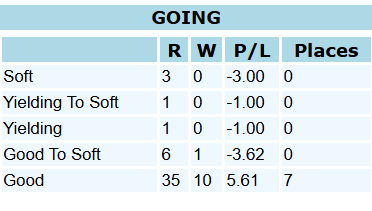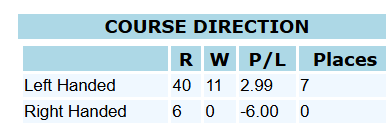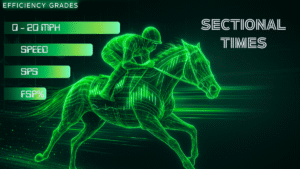Mastering the Form Book: Your Essential Guide to Reading UK Horse Racing Form (No Guesswork Required)
Horse racing, at its heart, is a glorious, unpredictable dance of athleticism, instinct, and strategy. And for the keen punter, the form book (or racecard) is your choreography notes. It’s the great leveller, the universal language of the turf, allowing each of us to pore over the same data and arrive at wildly different conclusions. That, in essence, is the enduring fun and mystery of it all.
Many prefer to outsource the hard yards, relying on newspaper tipsters to do the heavy lifting. Perhaps time is scarce, or the sheer willpower to decipher pages of statistics is lacking. But I can tell you, from a lifetime spent in its thrall, that form study is profoundly rewarding. It’s a mirror to life itself: the more you put in, the more you get out. And as many a successful individual will attest, diligent effort often lays the groundwork for good fortune.
My own journey has been paved with countless hours immersed in the minutiae of form, leading to those exhilarating moments when a meticulously chosen wager pays off handsomely. It’s an intellectual puzzle, a challenge that even our former racing-fan Prime Minister, R. J. Hawke, found captivating – you’d often spot him with a Sportsman (or more likely in the UK, a Racing Post) tucked in his pocket, a testament to the enduring appeal of the challenge.
So, what are my cardinal rules for navigating this intricate world? I have a few that I never deviate from. The first, and perhaps most crucial, is this: never peek at the ante-post betting markets before you’ve delved deep into the form book.
Why? Because allowing someone else’s perceived ‘value’ to seep into your consciousness can subtly, and detrimentally, sway your own objective assessment. You want your analysis to be pure, unadulterated by external biases. The form book, in its rawest form, holds all the critical clues to unlocking a race’s potential winner. It’s a blueprint of each horse’s capabilities: past victories, number of wins, class conquered, successful distances, proficiency on different types of going (ground conditions), weights carried, jockeys aboard, and the rivals they’ve bested or succumbed to. It’s all laid bare; your task is to untangle the statistical web and compare each thread, a painstaking but ultimately illuminating process.
.
Unpicking the Layers: What the Horse "Knows" vs. What the Jockey Can Manage
These are the core, inherent attributes of a horse that define its racing identity. They are often consistent, repeatable, and expressed through experience or innate preference. No amount of jockey skill can fundamentally alter these.
-
Surface Preference: Some horses are clear all-weather specialists (like a Tapeta or Polytrack champion), while others are turf strugglers. Their physical build and stride mechanics are simply better suited to one surface over another.
-
Going Bias: This is paramount in UK racing. A horse either moves better on soft ground and relishes a cut in the ground, or it doesn’t stretch on firm and jars on a quicker surface. You’ll often hear commentators mention horses “loving” or “hating” heavy ground – this isn’t poetic licence, it’s a fundamental physical response.
-
Example: Imagine “Mudlark Millie.” Her form proudly displays a string of dominant wins on “soft” or “heavy” ground, her pedigree echoing a lineage of renowned stayers who relish a cut in the ground. When the rain pours and the going turns into a bog, Millie’s eyes light up. She feels the resistance, but it’s a familiar challenge, one her conformation and inherent athletic makeup are perfectly suited for. Now, put Millie on “good to firm” ground, and you might see a completely different animal. Her high knee action, which propels her through the mud, can jar on a quick surface. She might not “let herself down,” as jockeys often say, meaning she holds back, protecting herself from discomfort or potential injury. No matter how brilliant the jockey – a Frankie Dettori or a Hollie Doyle – they cannot make Millie love firm ground. The discomfort is in the horse, a physical and almost psychological aversion that limits her peak performance. You’ll see her form on fast ground riddled with “pulled up” or “beaten a long way.” This isn’t poor riding; it’s a fundamental mismatch with the conditions.
-
-
Track Orientation: Some horses have a clear preference for a specific track layout. They might handle left-handed courses (like Chepstow or Windsor) with ease, while consistently hanging or underperforming on right-handed tracks (like Newmarket or Ascot). This is often down to lead leg preferences and muscle memory.
-
Trip Comfort Zone: Does the horse genuinely stay strongly over a mile and a half, or does it consistently not fully see it out beyond a mile? Conversely, a sprinter might have a clear comfort zone at 5 furlongs and struggle to sustain its pace over 7 furlongs.
-
Run Style: A horse often has a natural predisposition to how it wants to race: a natural leader that likes to dictate terms, a grinder that keeps going at one pace, or a fast-finishing hold-up horse that needs a strong pace to aim at.
-
Headgear Response: The introduction of blinkers might make a horse sharper, but it might resent visors, or genuinely need cheekpieces to concentrate. These are direct impacts on the horse’s sensory experience and comfort.
-
Mental Attitude: Some horses are reluctant in a finish and need company to keep going, others need company throughout to perform, while some are naturally more competitive or lazy. You might even observe signs like a tail swisher indicating irritation.
-
Field Size Dependency: Certain horses thrive in small fields, perhaps due to temperament or less jostling, while others might sulk in big crowds and need more space.
-
Resilience to Trouble: Is the horse easily intimidated by others or does it barge through gaps when a jockey asks? This speaks to its bravery and physical assertiveness in a pack.
-
Routine Rhythm: Does the horse perform better fresh after a break, does it build into form over several runs, or is it strong in back-to-back runs?
These intrinsic traits are often stable across runs, and once understood, they are crucial for defining when a horse is or isn’t likely to fire under a given setup.
lets look at Sir Tivo You Can See A Clear Going Preference On Good Ground The Horse Ran Well 17 From 35 Races 10 Wins & Places. You Can Also See Course Direction It Has Never Raced Well On Right Hand Tracks


What the Jockey Can Manage (External Factors)
These are situational variables the horse has no concept of, but which a skilled jockey can actively mitigate, exploit, or overcome. A horse doesn’t know it’s in stall 1 or a Class 5 race – but the jockey does. The rider’s job is to position the horse where it has the best chance to express its known traits, even in unfavourable setups.
-
Bad Draw: A horse drawing stall 13 at Chester (a notoriously tight, left-handed track with a short run to the bend) is a significant challenge. However, a smart rider can either tuck in early to save ground or blast early to try and get a prominent position.
-
Race Pace: Jockeys adapt to whether a race is being run slowly or strongly on the fly. They can choose to go forward if the pace is slow or hold up if it’s too fast.
-
Tactical Position: This is fundamental. Jockeys are constantly working to hold a good spot, make well-timed mid-race moves, and crucially, avoid traffic or getting boxed in.
-
Course-Specific Angles: Experienced jockeys know the nuances of each track – when to go wide for better ground, when to cut the rail, or when to hold onto a horse late for a stronger finish.
-
Bias: They can actively overcome a track bias by finding better lanes of ground or riding against a perceived bias if their horse is suited.
-
Ride Style Adaptation: A jockey can change from hold-up tactics to pressing depending on the specific setup of the race and the horses around them.
-
In-Run Decisions: Split-second calls like switching off heels when blocked, timing gaps perfectly, and preserving energy for the finish are all down to jockey skill.
-
Setup Deception: A top jockey might ride to expose a rival (e.g., forcing them to go too fast), force the tempo to suit their horse, or cleverly box others in.
-
Psychological Calm: Dealing with a nervous, keen (pulling hard), or hard-pulling horse requires immense skill and composure from the jockey to get them to settle and save energy.
-
Executing Yard Plan: Jockeys often ride to specific instructions from the trainer (e.g., a “quiet ride” to get a horse’s handicap mark to drop).
When They Conflict
Sometimes, a truly great ride can disguise poor suitability, making a horse look better than it was (flattering the horse). Conversely, a terrible ride can mask a well-handicapped, well-suited profile, making a good horse look worse than it is. As an analyst, spotting the difference – identifying when a jockey has helped or hindered a horse’s natural ability in specific conditions – is where the real edge lies. This is often where sectionals and visual replays become invaluable.
Essential Principles for Deeper Form Analysis:
-
Context Is King – No Form Is Absolute: Form must always be judged in the context of race conditions: surface, trip, pace shape, class, going, field size, etc. A 6th of 10 in a strongly run Class 2 race on unsuitable ground may be a far better run than a 2nd of 6 in a weakly run Class 4 on favoured ground. Context and setup matter more than just the finishing position.
-
Judge Each Run Against Today’s Conditions: Ask yourself for every past run: was the horse truly suited that day? (e.g., wrong trip, badly drawn, pace against it). A seemingly poor run when a horse was unsuited is often more valuable as a future pointer than a good run where the horse was significantly flattered by the conditions or pace.
-
Look for Repeatable Positives: Seek clear patterns in performance, especially when a horse has been well-handicapped in similar setups. Horses showing strong finishes when the race wasn’t run to suit their style (e.g., a hold-up horse closing well in a slowly run race) are prime candidates for an upgrade. Similarly, horses who stay well in strongly-run races often repeat this under similar pace shapes.
-
Trip Suitability Is Often Misread: Don’t rely solely on the listed distance; look deeper. Ask: was the horse doing its best work late? Did it travel strongly throughout? Was it keen and pulling too hard, wasting energy? A drop in trip may suit if the horse consistently travels strongly but doesn’t quite get home, while a step up in trip may suit if it always finishes with purpose from off the pace.
-
Class Is Relative, Not Hierarchical: The Official Rating (OR) alone doesn’t dictate competitiveness. Some horses are Class 4 specialists and rarely perform outside of that grade, others might thrive only in Class 6. Focus on the OR vs. the horse’s proven performance range for specific conditions and classes, rather than just the number.
-
Track Bias, Draw and Pace Are Form Shapers: Always factor in track configuration (e.g., tight, turning courses vs. galloping tracks like Doncaster), established draw biases (common at tracks like Chester or Goodwood), and likely pace maps. Form can be significantly misleading if a horse was drawn wrong or stuck behind slow/fast fractions that didn’t suit its run style.
-
Upgrade Based on Sectionals and Visual Evidence: Advanced analysis tools like sectional timings (Finishing Speed %, MPH) offer objective insight into a horse’s effort relative to the race shape. Visual replays help spot when a horse ran against the grain (e.g., a wide trip, boxed in, caught in pockets, or suffered interference). This allows you to “forgive” seemingly poor runs.
-
Note Headgear, Jockey, and Setup Angles: Be highly attentive to significant changes: first-time headgear (like blinkers or a tongue tie), a return to a regular winning jockey, or a switch to a preferred track or surface. These often signal deliberate intent from the stable. Look for trainer patterns around layoffs, specific course targeting, or trip changes.
-
Don’t Fall for Inflated Runs: Be cautious of horses who looked good in falsely-run races (where the pace was highly unusual), or when racing on bias-favoured ground or rail. Weak races can create deceptive form figures – always cross-compare the field’s subsequent efforts to gauge the true strength of a race.
-
Discipline > Guesswork: If the form doesn’t clearly point to suitability and value, leave it. Resist the urge to bet just for the sake of it. Focus only on horses whose profiles align logically and measurably with today’s race setup.
Deeper Dives into Form Elements:
Class: The Ultimate Arbitrator
“Class” is the bedrock of form study, the ultimate determinant in racing itself. Your racecard will tell you a horse’s past class of races. A horse that’s been racing in low-grade events might clock a similar time over a distance as a known Group 1 performer. This is highly misleading. If they clash, the classier galloper, almost invariably, will win. They possess a higher cruising speed, a better turn of foot, and the mental fortitude forged in tougher contests. Knowing your “class” is knowing your form.
Fitness: The Unseen Engine
Your form book immediately tells you how many runs a horse has had in its current campaign and how long since its last run. A fit horse has a winning chance. An unfit horse does not win. While a horse might have finished 7th, 8th, 9th, and 6th in four runs since a spell, you must ask: are those “conditioning runs” designed to bring it to peak fitness for this race? The progression of finishes, even if seemingly poor, can tell a story of a horse being brought to the boil.
Track Conditions (Going): Mark Your Card
When facing a slow or heavy track, your highlighter is your best friend. Ring every winning or good-placed performance on rain-affected ground. I personally jot ‘S’ for Soft, ‘H’ for Heavy, or even ‘SH’ if they’ve excelled in truly testing conditions, next to their name. This immediate visual cue tells you which horses have a proven history on the predicted going – and which have no such history. A lack of wet form doesn’t mean they won’t win, but it puts you firmly on your guard. Be wary too of horses that can handle “soft” but utterly detest “heavy” – the difference between yielding ground and a deep “bog” can be significant, especially during the notoriously damp British winters.
Let’s look at an example from the past: Fine Offer in the Craiglee Stakes at Flemington on September 14, 1985. This 1600m (approximately 1 mile) weight-for-age race was run on a very heavy track. My form study led me unequivocally to Fine Offer, and here’s why:
-
Heavy Ground Specialist: The form guide showed two critical wins on heavy ground (Feilding, NZ, 1983; Cheltenham, Adelaide, June 10, 1985). The Cheltenham win was particularly telling – first run in a month, cruised to a five-length victory, conceding 6.5 kgs (approx. 14 lbs). This proved both his comfort on testing ground and his inherent class.
-
Proven Class: Beyond the wet form, his ability to handle top-class fields was evident. Look back to April 13, where he ran a two-length fifth to Vite Cheval in the All Aged Stakes (weight-for-age) at Randwick. He was well up to the challenge of the Craiglee field.
-
Peak Fitness: With four solid runs since May 11, including two in the preceding month (August 10 and 24), Fine Offer was clearly fit and tuned. The 3rd at Sandown (heavy) to Bow Mistress and Luther’s Luck, followed by a 4th at weight-for-age in the J.J. Liston Stakes (heavy), confirmed his progression.
-
Top Stable: The Colin Hayes stable is synonymous with excellence.
Considering all these factors, Fine Offer, at 2-1, was my selection. He delivered, scoring by 1 1/2 lengths from the smart Tristarc. This is how the form guide, when truly interrogated, tells the story.
Distance: The Stamina Equation
You must be certain your selection can run the race distance. This isn’t always straightforward. A top-class 2m4f stayer resuming over 6f will likely be running on late, but statistics say they won’t win first-up at such a short trip. How do you rate their prospects against a proven 6f sprinter in peak form? This is where you dig deeper into the stayer’s history: has it won first-up before? Or does it consistently need three or four runs to hit its stride? This nuance is vital.
Weight: The Silent Burden
Weight, like class, is fundamental. A 2kg difference (or roughly 3lbs) between 8st 0lb and 8st 3lb might seem negligible, but between 8st 10lb and 9st 0lb, it can be profound, particularly over longer distances. A rule of thumb suggests 1 1/2kg (3lbs) equals one length. This rough guide allows you to measure horses against each other. If Horse A beats Horse B by two lengths at level weights, and they meet again with Horse A now carrying 2kg (3lbs) more, Horse B has theoretically narrowed the gap by just over a length. Will it be enough to turn the tables? The figures offer a hint, but the race dynamics themselves will provide the ultimate answer.
Recent Runs: The Trajectory of Form
The recent runs in the form book don’t just show finishes; they chart a horse’s trajectory. Is it improving, nearing its peak, or has it already hit its zenith and begun to decline? Horses cannot hold peak form indefinitely. They reach a pinnacle, hold it for a time, then taper off. The slightest sign of a horse losing form should be a red flag.
The Final Checklist: Your Educated Guess
Approach the form book calmly, rationally, discarding any personal biases against certain horses, trainers, or jockeys. What you are ultimately creating is an ‘educated guess’ – a well-reasoned prediction of the winner and its main dangers. You’ve harnessed your knowledge of racing and form to pinpoint the horse that, given a clear run, should be there at the finish.
Before making your final call, consider these 10 crucial questions:
-
Jockey Quality: Does the horse have a good, reliable jockey known for making smart tactical decisions?
-
Going Proficiency: Can it demonstrably handle the expected going (ground conditions)?
-
Distance Proven: Has it shown winning form or strong performances over the exact distance of the race?
-
Course History: Has it won or been placed at this particular racecourse before, indicating comfort with the track’s unique characteristics?
-
Market Confidence: Is it well-fancied by reputable experts and reflected in a solid pre-race market position (though remember, this is a secondary check)?
-
Stall Advantage/Mitigation: Does it have a good stall draw for the distance, or, if drawn wide, is it a horse/jockey combination capable of overcoming it through speed or tactical versatility?
-
Class Aptitude: Is it racing in its right class, or, if stepping up, does its form suggest it’s capable of handling the rise in competition?
-
Peak Fitness: Is the horse genuinely fit and ready to perform at its best? Look for progressive runs building towards this.
-
Recent Activity: Has it had a race or races within the last 21 days? If not, proceed with caution, as race fitness is paramount.
-
Weight Assessment: Is the horse well-weighted in relation to its past performances and the quality of the opposition?
Answering these questions thoroughly will solidify your conviction about each horse. There are no shortcuts to finding winners, as we all know. But the dedicated study of form, infused with an understanding of both the horse’s innate nature and the jockey’s strategic role, will undoubtedly narrow the gap between winning and losing.
NEXT UP
How To Read A Race Card
Learn how to compare a horse’s projected ceiling with their Official Rating to assess suitability.















